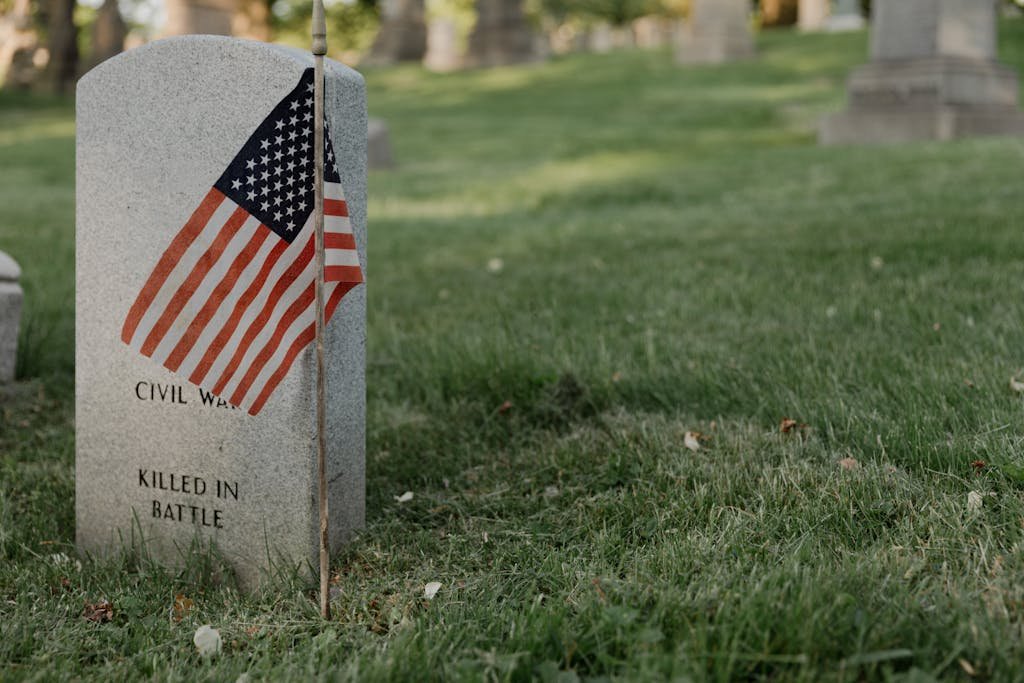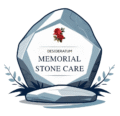Which Way Do Headstones Face?
Which way do headstones face? The direction a headstone faces is more than just a design choice—it’s often influenced by centuries of tradition, cultural symbolism, religious beliefs, cemetery layout, and even personal preference. While many people associate headstone orientation with Christian burial customs, there’s actually a wide range of practices across the world.
If you’re new to burial traditions, you might also find our guide on how to clean a headstone safely helpful, as it covers proper maintenance regardless of orientation.

East–West Orientation: The Most Common Tradition
Religious Symbolism
One of the most common orientations for headstones is facing east. This tradition has deep historical roots, especially in Christian customs. The belief is that during the resurrection, the deceased will rise to face the east, where it is said the Second Coming will occur. In ancient cultures, facing the sunrise also symbolized renewal, rebirth, and hope.
For many families, headstone placement and orientation are just one part of the process—choosing the right material is another. See our post on how to clean marble tombstones without damage for material-specific care tips.
Aesthetic and Practical Considerations
Beyond religious symbolism, east-facing graves create a consistent appearance across a cemetery. This uniformity:
- Makes navigation easier for visitors
- Simplifies maintenance and landscaping
- Ensures rows are straight and organized
Exceptions to the Rule
Clergy members have sometimes been buried facing west, symbolically looking over their congregations on Resurrection Day. In some modern cemeteries, orientation may vary depending on the section or layout of the grounds.
West, North, and South: Alternative Orientations
West-Facing Graves
While less common, west-facing graves can be found in certain religious or cultural contexts. In some traditions, this orientation may hold symbolic meaning, while in others it may simply result from the shape of the land or cemetery design.
Islamic Burial Practices
In Islam, the grave is oriented so that the body faces Mecca. The deceased is laid on their right side toward the Qibla, meaning the headstone will not necessarily face east or west but will be aligned according to this religious requirement.
Personal Preferences and Local Customs
In modern times, families may choose the orientation for personal reasons:
- Facing a scenic view such as mountains, trees, or the ocean
- Aligning graves so family members face each other
- Following a local or family tradition rather than a religious one
If you’re selecting a burial site, you may also want to consider our article on common headstone cleaning mistakes to avoid to protect your memorial long-term.
How Headstones Relate to Body Placement
Typical North American Layout
In most cemeteries in the United States, the headstone is positioned at the head of the grave. When a visitor stands in front of it, they are generally facing the head of the deceased. This means the inscription faces outward toward visitors, while the back of the headstone faces the length of the grave.
Variations in Layout
Some older cemeteries, or those with space limitations, may reverse the layout so the headstone is at the foot of the grave. This can cause confusion for visitors trying to understand the plot’s orientation.
For tips on preserving older grave markers in these varied layouts, see our post on best practices for cleaning old gravestones.
Why Orientation Matters
Choosing the direction of a headstone is about more than tradition—it affects the look and feel of the cemetery and can hold deep personal or spiritual meaning for the family. Whether following centuries-old customs or making a modern, personalized decision, orientation becomes part of the story the grave tells.
If you’ve already chosen an orientation and material, don’t forget to learn how often you should clean a grave marker to keep it looking its best.
Quick Reference Table: Headstone Orientations
| Orientation | Common Reasons |
|---|---|
| East-Facing | Christian tradition, sunrise symbolism, uniform appearance |
| West-Facing | Clergy tradition, cultural beliefs, space constraints |
| Toward Mecca | Islamic burial practice |
| Custom Directions | Scenic views, family traditions, unique requests |
Which way do headstones face?
Most headstones traditionally face east, following Christian customs and ancient symbolism connected to the rising sun. However, the actual direction can vary based on religion, culture, cemetery design, or family wishes.
Is there a rule for headstone orientation?
There is no universal rule. While east-facing is the most common, many cemeteries allow flexibility, and orientation may be chosen based on practical needs, religious beliefs, or personal preference.
Do bodies face the headstone or away from it?
In most cemeteries, the body is placed so that the head is nearest the headstone, meaning a visitor standing in front of it is looking toward the head of the deceased.
Why are Muslim graves not east-facing?
Islamic burial traditions require that the deceased be positioned on their right side facing Mecca. This orientation depends on the location of the cemetery relative to Mecca, so the headstone may face in any direction.
